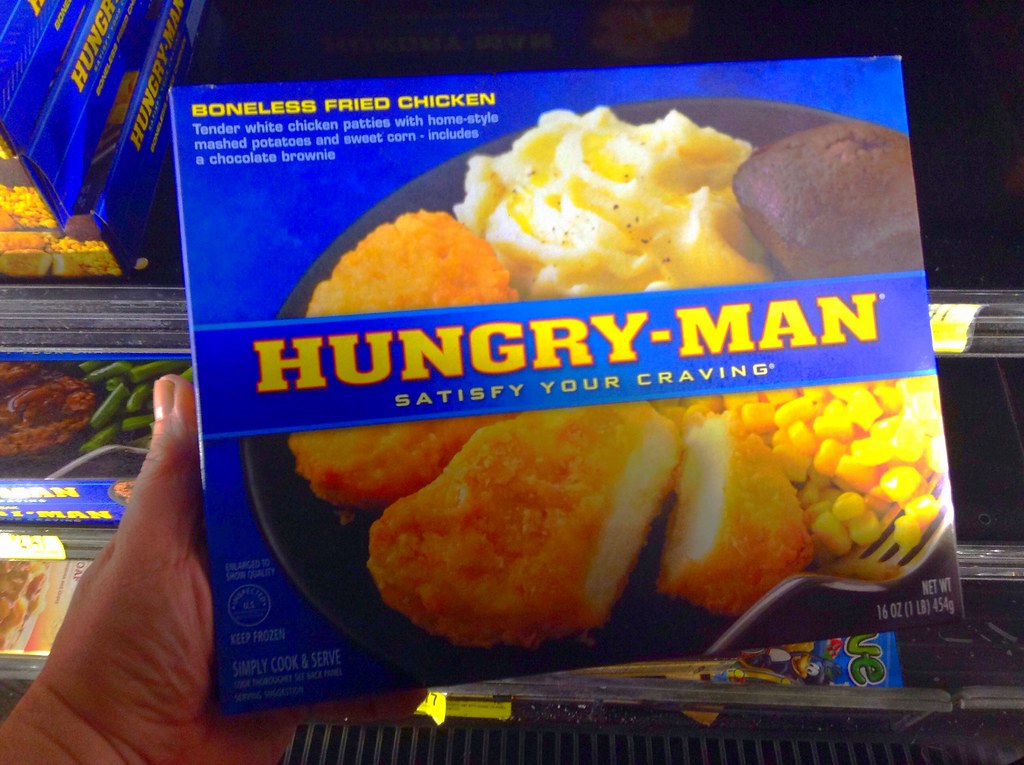Are Frozen Dinners Healthy? Tips for Smart Choices

In today’s fast-paced world, convenience often plays a significant role in meal choices. Frozen dinners, also known as TV dinners or ready meals, have become a popular go-to option for many people seeking quick and easy meals without the need for extensive preparation or cooking. These meals come in a variety of types, from indulgent comfort foods to seemingly nutritious options, and they can be found in nearly every grocery store aisle.
But with this convenience comes an important question: Are frozen dinners healthy? The answer to this question depends on several factors, including the ingredients, portion sizes, nutritional content, and the frequency with which frozen meals are consumed. In this article, we will explore the health implications of frozen dinners, analyze their pros and cons, and provide tips on how to make healthier choices when incorporating frozen meals into your diet.
What Are Frozen Dinners?
Frozen dinners are pre-cooked meals that are packaged, frozen, and intended to be reheated and eaten at home. These meals often contain a variety of components such as protein (meat, poultry, or plant-based alternatives), vegetables, grains, and sauces. Frozen dinners can range from simple entrees like chicken and rice to more complex dishes like lasagna, stir-fries, or even gourmet meals. Popular brands include Lean Cuisine, Healthy Choice, Marie Callender’s, and Stouffer’s, among others.
The freezing process helps preserve the meal’s ingredients and extends its shelf life, making it convenient for people who want to store meals for an extended period without worrying about spoilage. However, while freezing preserves the food, the overall nutritional quality of frozen dinners can vary greatly, depending on the ingredients and preparation methods used.
Nutritional Content of Frozen Dinners
The healthiness of frozen dinners depends largely on their nutritional content, which can vary significantly from one product to another. When evaluating the health impact of frozen meals, it’s important to consider several key factors:
1. Calories and Portion Size
One of the main issues with frozen dinners is that they are often either too calorie-dense or too small in portion size. Many frozen meals are marketed as single-serving portions, but the caloric content can range widely from as low as 250 calories to over 600 calories per meal. For individuals looking to control their calorie intake or manage their weight, choosing meals that align with daily caloric needs is essential.
Some frozen dinners may appear low in calories, but they often come in small portions that may not be satisfying enough for a full meal, leading people to supplement the meal with additional snacks or food. On the other hand, larger, more indulgent frozen dinners can contain excessive calories, especially when they include creamy sauces, cheese, or fried ingredients.
2. Sodium Content
One of the most significant concerns with frozen dinners is their high sodium content. Sodium is often added to frozen meals as a preservative and to enhance flavor. While some sodium is necessary for proper body function, excessive intake can lead to health issues such as high blood pressure, heart disease, and stroke.
The American Heart Association recommends consuming no more than 2,300 milligrams of sodium per day, with an ideal limit of 1,500 milligrams for most adults, especially those with pre-existing health conditions like hypertension. However, many frozen meals contain 500 to 1,500 milligrams of sodium in just one serving, which can account for a large portion of the daily recommended intake. Consuming frozen dinners regularly can easily lead to excessive sodium consumption, which is harmful in the long run.
3. Added Sugars
Frozen dinners, particularly those that include sweet sauces or glazes (e.g., sweet and sour chicken or teriyaki), can also contain added sugars. While sugar enhances flavor, too much added sugar can lead to weight gain, insulin resistance, and an increased risk of type 2 diabetes. Frozen meals that are high in sugar often contribute to a higher overall glycemic load, which can cause blood sugar spikes.
When selecting frozen meals, it’s essential to check the nutrition label for added sugars, especially if the meal contains sweet sauces or dressings. Opting for frozen dinners with minimal added sugars can help prevent these negative health effects.
4. Fat Content
Frozen dinners can vary significantly in their fat content, depending on the ingredients and preparation methods. Many frozen meals, especially comfort foods like mac and cheese or fried chicken, are high in saturated fats and trans fats, which can raise LDL (bad) cholesterol levels and increase the risk of heart disease.
On the other hand, some frozen dinners may contain healthier fats, such as those from olive oil, avocados, or nuts. When choosing frozen meals, it’s important to look for options that contain healthy fats rather than those laden with unhealthy, processed fats. Meals that are baked, grilled, or steamed are generally lower in unhealthy fats compared to those that are fried or prepared with heavy sauces.
5. Fiber and Nutrient Content
Frozen dinners can vary in terms of their fiber and nutrient content. Some frozen meals are heavily processed and low in whole grains, vegetables, and other fiber-rich foods, which are essential for maintaining digestive health and preventing chronic diseases. A lack of fiber can also lead to feelings of hunger soon after eating, making it more likely that individuals will overeat later in the day.
On the other hand, frozen dinners that include whole grains, vegetables, and lean proteins can provide valuable nutrients such as vitamins, minerals, and antioxidants. Choosing meals that are rich in these nutrients can help balance your diet and ensure that you’re getting enough essential nutrients to support overall health.
6. Protein Content
Frozen meals often contain varying levels of protein, depending on whether they include animal-based or plant-based protein sources. Adequate protein is essential for maintaining muscle mass, metabolism, and satiety (feeling full after a meal). When choosing frozen dinners, it’s important to check the protein content to ensure it aligns with your dietary needs.
Meals that include lean meats (such as chicken, turkey, or fish), legumes, tofu, or plant-based proteins tend to offer a healthier balance of protein without the excessive fat found in meals with processed meats or fried proteins.
Pros of Frozen Dinners
While frozen dinners have their nutritional drawbacks, there are also some notable advantages to incorporating them into your diet, particularly when chosen carefully. Here are some of the key benefits of frozen meals:
1. Convenience
The primary appeal of frozen dinners is their convenience. These meals can be stored for long periods and are easy to prepare, typically requiring just a few minutes in the microwave or oven. This makes them an attractive option for busy individuals who don’t have the time to cook from scratch.
For people with hectic schedules, frozen dinners can be a practical solution to ensure they get a meal without resorting to unhealthy fast food or skipping meals altogether.
2. Portion Control
For individuals who struggle with portion control, frozen dinners can be beneficial because they come in pre-portioned servings. This can help prevent overeating, particularly if the meal is balanced and provides appropriate amounts of protein, carbohydrates, and fats. Some frozen meals are designed with calorie-conscious individuals in mind, offering low-calorie options that can fit into a weight loss or maintenance plan.
3. Variety of Options
Frozen dinners offer a wide variety of meal options, including ethnic cuisines, vegetarian, vegan, gluten-free, and low-carb choices. This variety can help people maintain a more diverse diet without needing to buy and prepare multiple ingredients. Some brands even focus on offering nutrient-dense meals with healthier ingredients, such as whole grains, organic vegetables, and lean proteins.
4. Nutrient Preservation
Freezing food can help preserve vitamins and minerals that might otherwise degrade over time. In fact, many frozen vegetables and proteins are harvested and frozen at their peak freshness, helping to retain their nutritional value. For individuals who don’t have access to fresh produce year-round, frozen meals with vegetables can provide a convenient way to meet daily nutritional requirements.
Cons of Frozen Dinners
Despite their convenience and variety, frozen dinners also have several downsides that can negatively impact health, particularly when consumed regularly. Here are some of the key drawbacks:
1. High Sodium Levels
As mentioned earlier, high sodium content is one of the most common concerns with frozen dinners. Regular consumption of meals with excessive sodium can increase the risk of hypertension (high blood pressure), heart disease, and stroke. For individuals who are already managing chronic conditions like high blood pressure or heart disease, frozen dinners with high sodium can be particularly harmful.
2. Lack of Fresh Ingredients
Although freezing preserves food, it can’t replicate the taste, texture, and overall quality of freshly prepared meals. Many frozen dinners rely on preservatives, flavor enhancers, and artificial ingredients to improve taste and shelf life, which may detract from the overall nutritional quality of the meal. Frozen meals may also contain refined grains, processed meats, and added sugars, which are less nutritious than whole, unprocessed ingredients.
3. Heavily Processed
Frozen dinners often fall into the category of processed foods, which can be detrimental to health when consumed in excess. Processed foods are typically higher in unhealthy fats, sodium, and additives, and lower in essential nutrients like fiber and vitamins. Eating highly processed meals regularly can increase the risk of chronic diseases, including obesity, diabetes, and heart disease.
4. Low in Fiber
Many frozen dinners are made with refined grains and lack an adequate amount of vegetables, making them low in fiber. Fiber is essential for digestive health, preventing constipation, and regulating blood sugar levels. A diet low in fiber can lead to digestive issues, increased appetite, and a higher risk of developing conditions like type 2 diabetes and colon cancer.
5. Questionable Protein Sources
Some frozen dinners contain processed meats or low-quality protein sources, which can be high in saturated fats and sodium. Processed meats like bacon, sausage, and deli meats have been linked to an increased risk of certain cancers, including colorectal cancer. It’s important to choose frozen meals with lean, whole-food-based proteins like chicken breast, turkey, fish, tofu, or legumes.
How to Make Healthier Frozen Dinner Choices
While many frozen dinners may not be ideal for regular consumption, there are ways to make healthier choices when opting for frozen meals. Here are some tips to help you select better options:
1. Check the Nutrition Label
Before purchasing a frozen meal, always check the nutrition label for key information like calories, sodium, saturated fat, and added sugars. Look for meals that contain less than 600 milligrams of sodium, moderate calories, and minimal added sugars. Also, ensure the meal provides a good balance of protein, fiber, and healthy fats.
2. Look for Whole Grains and Vegetables
Frozen dinners that include whole grains (like brown rice, quinoa, or whole wheat pasta) and a variety of vegetables are generally more nutritious than those made with refined grains or lacking in produce. Aim for meals that include at least one or two servings of vegetables and provide a healthy dose of fiber.
3. Choose Lean Proteins
Opt for frozen meals that feature lean proteins like chicken, turkey, fish, tofu, or plant-based protein sources (like lentils or beans). Avoid meals with processed meats or fried components, as these are typically higher in unhealthy fats and sodium.
4. Be Mindful of Portion Sizes
While frozen dinners can help with portion control, some meals may be too small to provide adequate satiety. If you find that a frozen dinner leaves you feeling hungry, consider adding a healthy side dish like a salad, steamed vegetables, or a piece of whole fruit to increase the meal’s overall nutrient density and satiety.
5. Look for “Healthier” Brands
Some frozen meal brands are specifically marketed as healthier options, focusing on organic ingredients, low sodium, and balanced nutrition. Brands like Amy’s, Evol, and Saffron Road offer more nutrient-dense frozen meals with a focus on whole foods and fewer additives. These meals tend to have better nutritional profiles compared to traditional frozen dinners.
Conclusion
In conclusion, frozen dinners can be both healthy and unhealthy, depending on the specific meal and how often it’s consumed. While these meals offer convenience and can be helpful for individuals with busy lifestyles, they often contain high levels of sodium, saturated fats, and added sugars. Many frozen dinners are also low in fiber and heavily processed, which can negatively impact health when consumed regularly.
That said, not all frozen dinners are created equal, and there are ways to make healthier choices. By checking the nutrition label, opting for meals with whole grains, vegetables, and lean proteins, and being mindful of portion sizes, you can incorporate frozen meals into your diet in a balanced and health-conscious way.
Ultimately, the key to making frozen dinners work in a healthy eating plan is moderation and selectivity. Frozen meals can serve as a convenient option in a pinch, but for long-term health, they should be complemented with a diet rich in fresh fruits, vegetables, whole grains, and unprocessed foods.



